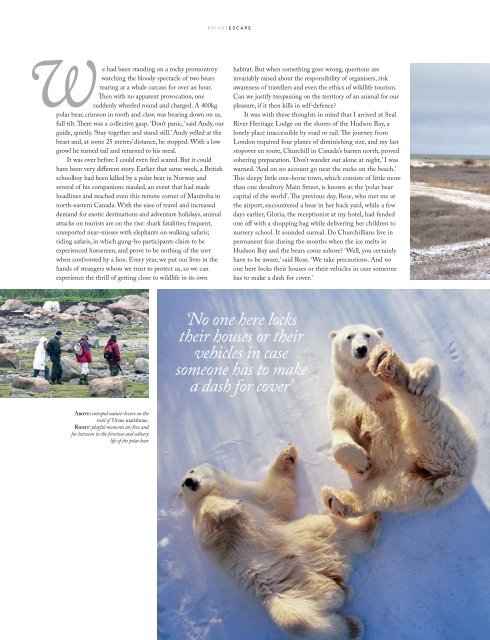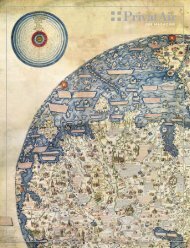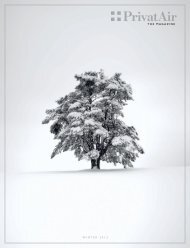january-2012
january-2012
january-2012
Create successful ePaper yourself
Turn your PDF publications into a flip-book with our unique Google optimized e-Paper software.
e had been standing on a rocky promontory<br />
watching the bloody spectacle of two bears<br />
tearing at a whale carcass for over an hour.<br />
Th en with no apparent provocation, one<br />
suddenly wheeled round and charged. A 400kg<br />
polar bear, crimson in tooth and claw, was bearing down on us,<br />
full tilt. Th ere was a collective gasp. ‘Don’t panic,’ said Andy, our<br />
guide, quietly. ‘Stay together and stand still.’ Andy yelled at the<br />
beast and, at some 25 metres’ distance, he stopped. With a low<br />
growl he turned tail and returned to his meal.<br />
It was over before I could even feel scared. But it could<br />
have been very diff erent story. Earlier that same week, a British<br />
schoolboy had been killed by a polar bear in Norway and<br />
several of his companions mauled, an event that had made<br />
headlines and reached even this remote corner of Manitoba in<br />
north-eastern Canada. With the ease of travel and increased<br />
demand for exotic destinations and adventure holidays, animal<br />
attacks on tourists are on the rise: shark fatalities; frequent,<br />
unreported near-misses with elephants on walking safaris;<br />
riding safaris, in which gung-ho participants claim to be<br />
experienced horsemen, and prove to be nothing of the sort<br />
when confronted by a lion. Every year, we put our lives in the<br />
hands of strangers whom we trust to protect us, so we can<br />
experience the thrill of getting close to wildlife in its own<br />
Above: intrepid nature-lovers on the<br />
trail of Ursus maritimus.<br />
Right: playful moments are few and<br />
far between in the ferocious and solitary<br />
life of the polar bear<br />
PRIVATESCAPE<br />
Sixty-Six<br />
habitat. But when something goes wrong, questions are<br />
invariably raised about the responsibility of organisers, risk<br />
awareness of travellers and even the ethics of wildlife tourism.<br />
Can we justify trespassing on the territory of an animal for our<br />
pleasure, if it then kills in self-defence?<br />
It was with these thoughts in mind that I arrived at Seal<br />
River Heritage Lodge on the shores of the Hudson Bay, a<br />
lonely place inaccessible by road or rail. Th e journey from<br />
London required four planes of diminishing size, and my last<br />
stopover en route, Churchill in Canada’s barren north, proved<br />
sobering preparation. ‘Don’t wander out alone at night,’ I was<br />
warned. ‘And on no account go near the rocks on the beach.’<br />
Th is sleepy little one-horse town, which consists of little more<br />
than one desultory Main Street, is known as the ‘polar bear<br />
capital of the world’. Th e previous day, Rose, who met me at<br />
the airport, encountered a bear in her back yard, while a few<br />
days earlier, Gloria, the receptionist at my hotel, had fended<br />
one off with a shopping bag while delivering her children to<br />
nursery school. It sounded surreal. Do Churchillians live in<br />
permanent fear during the months when the ice melts in<br />
Hudson Bay and the bears come ashore? ‘Well, you certainly<br />
have to be aware,’ said Rose. ‘We take precautions. And no<br />
one here locks their houses or their vehicles in case someone<br />
has to make a dash for cover.’<br />
‘No one here locks<br />
their houses or their<br />
vehicles in case<br />
someone has to make<br />
a dash for cover’






